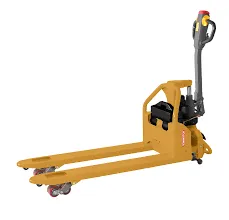


Roof Fall Restraint Systems Ensuring Safety in Construction
In the construction industry, safety is of utmost importance, especially when it comes to working at heights. Roof fall restraint systems play a crucial role in minimizing the risk of falls, ensuring worker safety, and complying with regulations. These systems are designed to prevent accidents by restraining workers from falling off edges, roofs, or elevated surfaces, thereby protecting them during construction and maintenance activities.
Understanding Roof Fall Restraint Systems
A roof fall restraint system functions on the principle of limiting a worker’s movement to a defined area, thereby preventing them from reaching the edge of a roof or other elevated platform. Unlike fall arrest systems that allow a worker to fall before being caught by a safety harness and lanyard, restraint systems are intended to completely prevent falls from occurring in the first place. This proactive approach to safety is critical in high-risk environments such as construction sites.
Typically, these systems include components such as safety harnesses, lanyards, and anchor points, which are integral to the worker's safety. The harness is worn by the worker, connecting them to a secure anchor point that is firmly fixed to the building structure. This connection restricts the worker's movement, ensuring they remain a safe distance from dangerous edges.
Benefits of Roof Fall Restraint Systems
1. Enhanced Safety The primary advantage of using roof fall restraint systems is the enhanced safety they provide. By preventing workers from getting too close to the edge and falling, these systems significantly reduce the likelihood of accidents and injuries.

2. Increased Productivity Knowing that they are protected by a reliable restraint system allows workers to focus keenly on their tasks without the constant fear of falling. This increased confidence can lead to improved productivity and efficiency on the job site.
3. Simplicity of Use Roof fall restraint systems are generally straightforward to set up and use. With basic training, workers can easily learn how to wear the harness correctly, secure their lanyard, and identify proper anchor points, ensuring that safety is not compromised.
4. Compliance with Regulations Many countries have stringent safety regulations governing construction activities, especially those involving heights. Implementing roof fall restraint systems helps construction companies comply with these regulations, preventing potential fines and legal issues arising from safety violations.
Selecting the Right System
Choosing the right roof fall restraint system depends on several factors, including the type of work being performed, the roofing structure, and the specific job site conditions. Employers should conduct a thorough risk assessment to determine the most suitable system for their operations. Additionally, consulting with safety professionals can provide invaluable insights into the best practices for implementing these systems effectively.
Conclusion
In conclusion, roof fall restraint systems are an essential component of workplace safety in the construction industry. By preventing falls and protecting workers, these systems not only save lives but also enhance productivity and ensure compliance with safety regulations. As construction methods and technologies continue to evolve, so too should our approaches to worker safety. Investing in robust roof fall restraint systems is not just a regulatory obligation; it is a moral imperative that reflects a commitment to safeguarding human life in one of the most challenging work environments. By prioritizing safety, companies can create a safer future for all workers involved in construction activities.



